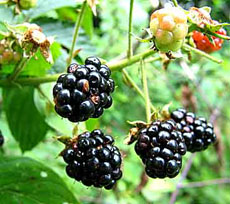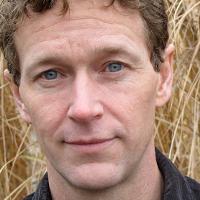
To be honest, we thought we’d cut ourselves some slack. We were going to northern British Columbia, for god’s sake. We could hardly be expected to stick to some monkish vow to eat only those foods produced in a hundred-mile radius. Environmental sustainability would, like us, be taking a summer holiday.
Where are we headed exactly? Let’s call it Devil’s Elbow, B.C., which is, in fact, one of its names. It’s not quite a ghost town (population: 1), but you’d agree with that description if you heard some of the noises that haunt the 80-year-old homestead shack we’ve been in for a month. The place is like a visit to the doomsayers’ version of the End of Oil: no road access, no power, no sewage, no cell signal, no running water except for a glacial river. I think we could be forgiven for fudging our 100-Mile Diet rules. I haven’t used toilet paper for weeks (ah, the double-ply softness of thimbleberry leaves); surely I could allow myself a couple bags of Californian granola.
What has amazed us, though, is just how achievable a 100-Mile Diet actually is here on the 55th parallel -- and beyond. There is tendency, south of 50_, to imagine everything north of the Lower Mainland and Okanagan (they make wine there, right?) as a hinterland of thick forest, early frost, and people who prefer shooting road signs to planting vegetable gardens. Well, witness these two markets. Nothing we’ve seen in Vancouver can compare. No, you can’t get on-site massage or hand-blended chakra-aligning teas, but you can get an incredible supply of good, real food. As a rule, it is both cheap and enormous -- cabbages larger than your head, lettuce leaves like serving platters, shrubs of local herbs. (At a farmgate stop in the Kispiox Valley, everything we bought was the biggest we’d ever seen, from greens to beans to berries). Farmers themselves, in varieties from German to Tsimshian to former-Vancouverite, point to the rich alluvial soil, rainforest rain, and 20-hour summer days. Others hint at ancient deposits of sasquatch nightsoil.
Devil’s bounty
The fact is, we found more at these “northern” markets than we have in Vancouver. There is, however, the same sense that most of the shopping is done elsewhere. One woman was surprised to find “young people” buying her beet greens; two Portuguese-Canadian farmers simply could not believe I knew how to cook favas. As with everywhere else, the Save-Ons and Safeways do brisk business in organic apples from New Zealand (really -- we checked) and processed foods while the freshest market produce imaginable fades into a kind of quaint remnant economy.
Gloomy observations aside, by the time we’d hopped the train for the 40-minute ride to Devil’s Elbow, we were stocked: potatoes, summer savoury, celery, zucchini, a jar of pickled eggs, smoked sockeye salmon from the famous Wet'suwet'en gaff-fishing site at Moricetown, cabbage, lettuce, cucumber, green onions, yellow onions, honey, cauliflower, yellow and ribbon green beans, fava beans. All of it was huge and half the price of either the chain stores or Vancouver’s markets. Of special note: tomatoes from Smithers, the best either of us had ever had, from a nearly silent old man named Willie; and packs of dried pinto and fava beans grown outside of Terrace. These are the first dried beans we’ve seen at any market since we started the 100-Mile Diet, and we cleaned the guy out to pack them home for vegan meals.
Supersize me
Of course, the provisions don’t stop as you enter the wilderness -- it’s just that they aren’t lined up on fold-out tables. We had already picked an entire cereal box of Saskatoon berries outside the small town of Telkwa (did I mention these were the largest we’d ever seen?), and they kept well, un-refrigerated, until we’d eaten the whole bunch. In Devil’s Elbow, there were fresh opportunities: thimbleberries, highbush cranberries, huckleberries, dandelion greens.
We’re far from bush masters, but we know a handful of wild foods, and with our market vegetables and some stocks from past years (yes, as a matter of fact I was tempted to buy the Unabomber biography I saw in Smithers), we were living well -- and living 100 Mile. There was also the old homesteaders’ orchard -- still churning out heritage sour cherries and apples in its ninth decade -- and the river itself.
Four species of salmon churn upriver through the summer, along with Dolly Varden, bull trout and other tasty fish. Having journeyed rather far from my near-veganism at the start of this experiment, I caught a pink salmon on my tenth cast -- big enough to cost a day’s wages in Vancouver, and up here most of the First Nations fishers won’t even keep them. We ate two overdose meals of fish to keep the meat from spoiling and then, on my second day of fishing, I lost the rod overboard and contemplated karma.
Extreme menus
It’s all a swell adventure, of course -- good Boy Scout-variety fun. More important is the fact that much of this ecological wealth is neither ignored nor forgotten in the way that it has come to be in Canada’s urban centres. Take Margaret Edgars, a 58-year-old Haida woman recently profiled in northword, a great, small magazine based in Smithers). Edgars figures she takes close to 100 per cent of her diet from the land and sea around her: berries, fish, shellfish, seaweeds, mushrooms, wild teas and game.
Step off the grid a little and local self-reliance is still the rule. In one 100-Mile highlight, we rode a bike over back trails to trade canned orchard apples for canned sockeye salmon with a “neighbour” who lives most of his life in the bush -- enough so to have a taste for smoked bear’s meat and to know how to make moonshine with berries and potato skins (dry, but with a sweet, homebrew nose). Everyone seems to have a backwoods garden, a mental map of berry patches, an encyclopedic knowledge of smoking techniques.
Edward Hoagland, a grand man of American letters, came to this part of the world in 1966, and out of it came a classic book called Notes from the Century Before. It was a eulogy, really, a sad kiss goodbye to the grizzly and the wolf, to the pioneer spirit, and to creeks so full of fish that one was called Catch-‘em-With-Your-Hand. Hoagland predicted it would all go the way of Pennsylvania and Florida, stripped of wild mystery and lost in a whirl of freeways and industrial dumps.
‘200 years-ago tongue’
He was mostly correct, but there’s a new possibility here as well -- some Notes from the Century to Come, perhaps. There are still enough people with an actual relationship with the land, especially in the farther-flung pockets of this province, to point to a different way of doing things. There are, for example, people who still remember when commercial farming was a real way to make a living in valleys all the way up into the Alaska Panhandle. (Because of this otherwise forgotten history, our old homestead shack is in the Agricultural Land Reserve…while ALR gets turned under for condos in Delta). There are still people who shoot two bullets a year, one for the first moose and one for the second. There are people, like Margaret Edgars, still eating or trying anew the traditional foods taken from the landscape before the colonial arrival of Green Giant and Tim Horton. Edgars calls it the “200-years-ago tongue.” I don’t want to romanticize. Rural British Columbia is far from some bucolic throwback to buckskin-wearing live-off-the-landers, and unleashing the citizens of Vancouver to hunt and gather the North Shore would quickly strip the wild country of ever form of life. Still, the 200-years-ago tongue could be our future, too. Look at this province with 100-Mile eyes and it is suddenly startling just how little of our bioregion has actually crept its way into our collective culture.
Take that same perspective into the forest and you are equally dazzled by the possibilities. You see how quickly the first tender shoots and wild greens give way to berries, to more berries, to salmon season, to mushroom season. Move through the landscape as a forager, imagining a culture more deeply rooted in its place, and you move more slowly, dare I say mindfully. And when you emerge, as you always will in B.C., into the shocking emptiness of a clearcut, everything lost for a single crop of trees, you don’t think of it as destruction. You think of it as waste.
Well, we weren’t sure how long we’d last in Devil’s Elbow. But then, the blackberries are coming ripe, and the Indian plum, and we just found a bog of blueberries, and the first chanterelles. Already we have pine mushrooms; cans of preserves and salmon, two (successfully) experimental dried berry cakes. We’ll stay a little longer. And when we decide to leave for Vancouver, we’ll go home a little richer.
Alisa Smith and J.B. MacKinnon will be writing twice a month for The Tyee about their attempt to eat well on the 100-Mile Diet. For more information on finding locally produced food visit the web site of FarmFolk/CityFolk .
Read the whole 100-Mile Diet Series Here ![]()
Read more: Local Economy
















Tyee Commenting Guidelines
Comments that violate guidelines risk being deleted, and violations may result in a temporary or permanent user ban. Maintain the spirit of good conversation to stay in the discussion.
*Please note The Tyee is not a forum for spreading misinformation about COVID-19, denying its existence or minimizing its risk to public health.
Do:
Do not: